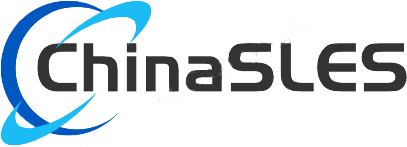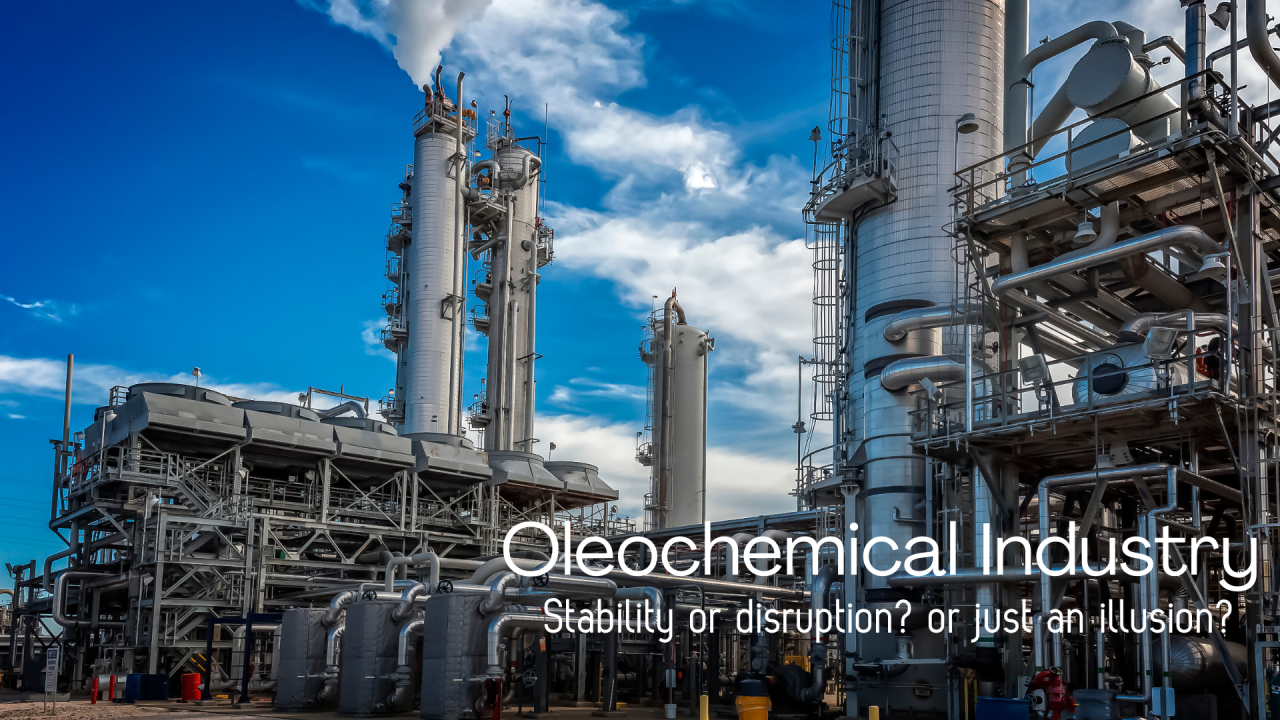Darrell Tan 🇲🇾🇮🇩
The Illusion of Stability vs. The Reality of Disruption
The oleochemicals industry has indeed been relatively stable for decades, relying on the same business model:
- Sourcing natural fats and oils (palm, tallow, coconut, etc.).
- Processing them into fatty acids, fatty alcohols, glycerin, and derivatives.
- Selling based on price, scale, and long-term contracts.
For the past 50 years, this model has worked because:
✅ Demand was steady. Industries like personal care, home care, and industrial applications always needed oleochemicals.
✅ Few disruptive forces. There was no technology capable of replacing natural-based oleochemicals at scale.
✅ No urgent sustainability pressure. Green regulations were weak, and most companies operated without real environmental accountability.
However, there is a problem. I think the conditions that maintained the stability of this industry no longer exist.
Why Will the Next 5 Years Be So Different?
The world is fundamentally different now than it was in the past 50 years. Five powerful forces are converging to force transformation at a speed never seen before:
1. Exponential Technology Growth (vs. Slow Tech Evolution in the Past)
50 years ago, no real alternatives to traditional oleochemicals existed.
Today, synthetic biology, precision fermentation, and AI-powered chemistry can design and produce lipids, surfactants, and bio-materials without palm oil, tallow, or coconut oil.
Key shift: What took decades to develop before can now be created in months with AI and bioengineering.
Reflection:
- Are we assuming competitors will come from the same industry, or are we watching biotech startups, AI-driven material science, and alternative feedstock innovators?
- Are we integrating AI into our product R&D or still using slow, traditional methods?
2. Sustainability is No Longer Optional (vs. Weak Regulations Before)
Governments and global brands are no longer tolerating supply chains that destroy forests or produce high carbon footprints.
The EU, US, and other major markets are imposing strict traceability, deforestation-free sourcing, and carbon taxes.
Big customers (Unilever, P&G, L’Oréal) are shifting to alternative bio-based chemicals to meet their sustainability goals.
The old “mass-scale, lowest-cost production” model will no longer be acceptable soon.
Reflection:
- Are we waiting for regulations to force us to act, or are we moving ahead of the curve to secure our future market?
- Are we investing in traceability, regenerative sourcing, and zero-carbon production, or will we lose customers when they demand it?
3. Deglobalization & Supply Chain Disruptions (vs. a Predictable Global Market)
For decades, companies relied on cheap, globalized supply chains.
Now, geopolitical risks, trade restrictions, and localized manufacturing trends are disrupting oleochemical supply chains.
Shipping costs, trade tensions (e.g., EU palm oil bans), and unpredictable raw material availability will make traditional sourcing unsustainable.
Reflection:
- Are we still betting on global trade stability or diversifying our supply chain strategy?
- Have we explored regionalized production models to ensure resilience in case of major disruptions?
4. Customers Are Shifting to High-Value, Performance-Based Bio-Materials (vs. Commodity Buying)
In the future, in addition to selling fatty acids, glycerin, and alcohol, it should also sell functionality.
Customers are looking for high-performance bio-based ingredients tailored for specific applications (e.g., biotech, pharma, high-end personal care, sustainable plastics).
If traditional oleochemical companies don’t move into high-value derivatives, custom molecular designs, and precision bio-ingredients, they will lose to those who do.
Reflection:
- Are we still just selling “oleochemicals” or developing functional, specialized solutions for next-gen industries?
- How can we shift from being a raw material supplier to a bio-material innovator?
5. AI & Digitalization Will Reshape Manufacturing & Sales (vs. Old-School Manual Processes)
AI-powered material design will allow faster development of novel oleochemicals.
Blockchain-based traceability will become the new standard for ensuring ethical and sustainable sourcing.
Companies that integrate AI, automation, and digital chemistry will be more efficient, cost-competitive, and agile in responding to market shifts.
Reflection:
- Are we still running manual, traditional R&D and production, or are we using AI, automation, and digital chemistry to stay competitive?
- How can we leverage real-time data analytics and blockchain tracking to gain a competitive edge?
The Biggest Roadblock to Oleochemical Transformation
The human capital in the oleochemicals industry is not prepared for the level of transformation that’s coming.
- Most professionals in this space have operated in a stable, commodity-driven mindset for decades.
- There’s a lack of exposure to AI, biotech, synthetic chemistry, blockchain, and digital transformation.
- Many leaders underestimate the urgency of change and continue to prioritize traditional operational efficiencies over strategic reinvention.
But here’s the harsh reality:
Technology and markets evolve faster than people do.
If the industry doesn’t aggressively upgrade its human capital, no matter how much technology or investment is available, most companies will not be able to execute.
The traditional focus has been on cost efficiency, process optimization, and growth driven by volume. As a result, there has been little incentive to invest in research and development (R&D), innovation, or high-value differentiation. Many employees and executives lack training in business model reinvention and the adoption of new technologies.
Most oleochemical professionals have a strong background in traditional chemistry and engineering but little exposure to AI-driven material science, bioengineering, or digital chemistry. AI-driven molecular design, synthetic biology, and blockchain-based traceability are becoming core parts of the future of this industry, but very few current employees are trained in these fields.
Many industry leaders grew up in stable markets and are uncomfortable with rapid, disruptive change. Their decision-making structures are slow and hierarchical, making it difficult to respond to fast-moving shifts. They tend to wait for competitors to act first instead of leading transformation.
The industry continues to hire based on traditional skill sets, emphasising chemical engineers and process specialists rather than cross-disciplinary innovators. There is minimal integration with the tech and biotech sectors, suggesting that fresh talent with expertise in AI, synthetic biology, and sustainability seek opportunities elsewhere (e.g., biotech startups, pharmaceuticals, and advanced materials).
Many companies depend on internal training programmes that emphasise operational improvements over future-oriented skills. Most employees are not exposed to disruptive business models such as decentralised manufacturing, high-value bio-based chemistry, and AI-driven R&D. Without urgent investment in reskilling, a significant portion of today’s workforce may become obsolete within the next five years.
Am I Being Too Pessimistic About the Future?
I’ve spent decades in the oleochemical industry, long enough to feel its pulse and anticipate its movements before they happen. I’ve seen the cycles, price fluctuations, supply chain disruptions, and constant battle to stay competitive. Like many in this field, I was trained to think in efficiency, scale, and cost leadership. That was the game.
I knew change was needed a few years ago, but I felt stuck. When I looked within my own organization, I felt the weight of the challenge. It wasn’t just the market that needed to change; it was us, including shareholders.
- Skill gaps: My team, myself included, had deep industry knowledge but lacked exposure to new technologies, AI-driven insights, and high-value product innovation. Our network, skills, abilities, and knowledge are slowing us from crossing the bridge.
- Fear of the unknown: We had spent years perfecting what we knew. Now, we were being asked to step into a new world where efficiency alone wouldn’t be enough.
- Mindset inertia: The hardest part of shifting from a commodity supplier to a value-driven innovator was a business model change and a mental transformation.
Should I view this change as an inevitable threat or an opportunity? Is it better to wait and see or take decisive action? We may have time if we assume these disruptions will take decades to unfold. However, history shows that industries don’t gradually decline. They collapse suddenly when better alternatives emerge. The companies that act proactively will lead, while those that hesitate will be left behind.
One thing I know for sure is that “Waiting is the riskiest move.”
Final Call to Action:
The oleochemical industry is undergoing a technological shift and a transformation in leadership and talent.
The question is: Who will take action today, and who will wait until it’s too late?
If you are in the same industry as me, you are welcome to share your thoughts. Love to hear different perspectives, too.

